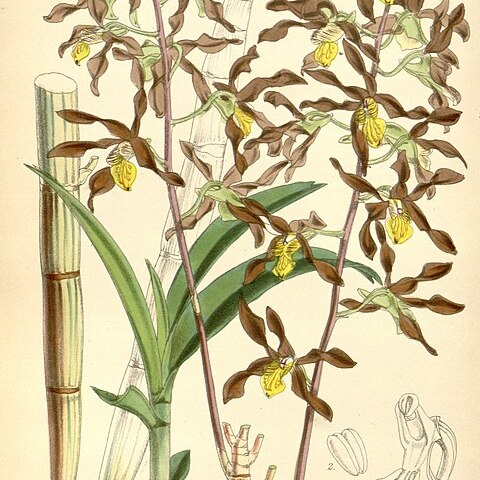Pseudobulbs spindle-shaped, 100–300 × 10–15 mm, often dark brown or purplish brown. Leaves 5–10 on upper nodes, 100–200 × 12–15 mm, dark green to purplish green, sheath often with purple stripes. Racemes 100–250 mm long, 6–15-flowered. Flowers 25–45 × 20–40 mm, chocolate brown with bright yellow labellum, strongly and unpleasantly scented. Sepals and petals thick, shiny, twisted. Dorsal sepal 20–25 × 4–5 mm. Lateral sepals 20–25 × 4–6 mm. Petals 20–25 × 2–4 mm, twisted once or twice. Labellum 10–16 × 7–10 mm; lateral lobes erect; midlobe curved, with 3 prominent ridges that extend onto midlobe.


